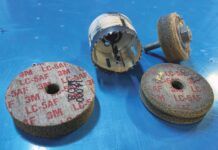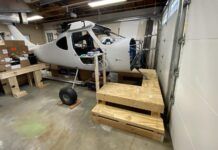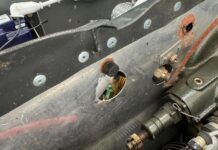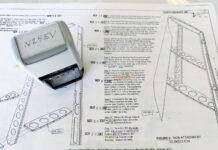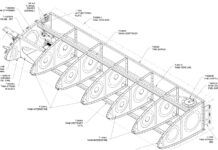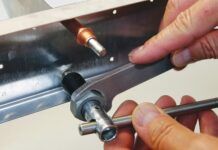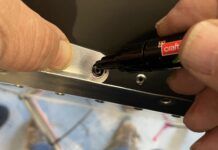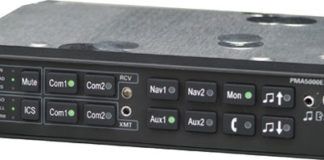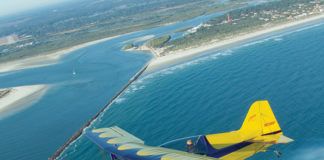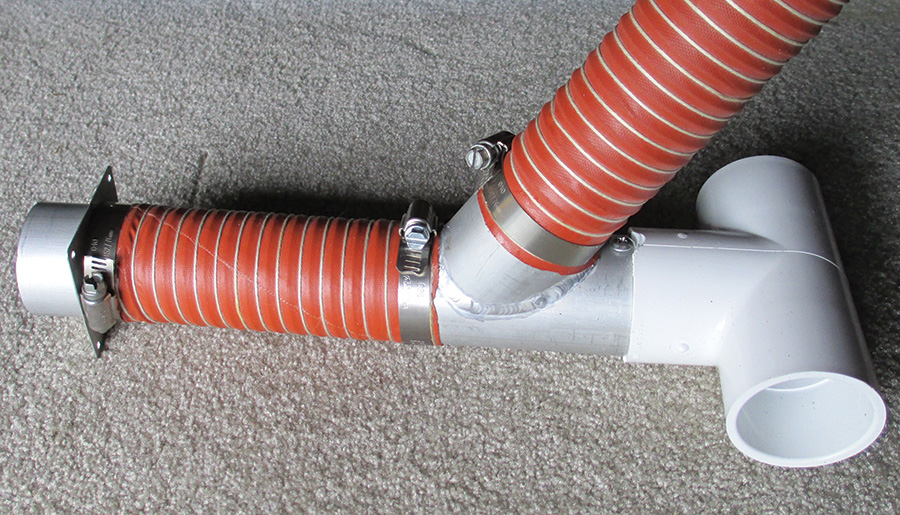
Cabin heat plenum. A 90° elbow (not shown) attaches to the 2-inch flange duct and keeps the plenum away from rudder pedal movement and brake lines.
When we are building our airplanes, we sometimes overlook items simply because we are excited about flying our handiwork. It is my hope that in spite of that, we never overlook safety. For me it was bypassing the construction of a cabin heat plenum. I had a 2-inch hole in the firewall with a cabin heat box mounted to the firewall. There was a shutoff valve that was controllable from the cockpit. My feet would melt, but the rest of me and the passenger were cold. After a recent winter flight to Nampa, Idaho with my wife, I decided to do something about it. Funny how a freezing, nagging wife is all it takes to motivate change.
One of the great things about owning a kit/Experimental airplane is we don’t have to go through expensive STCs to make a change. As long as the change is safe, functional, and easy to use, owners are good to go. To get started, I removed the seatback from my Glasair so I could get up-close and personal with the area where cabin heat entered the cabin. After taking a good look and taking measurements, I was able to formulate a design.
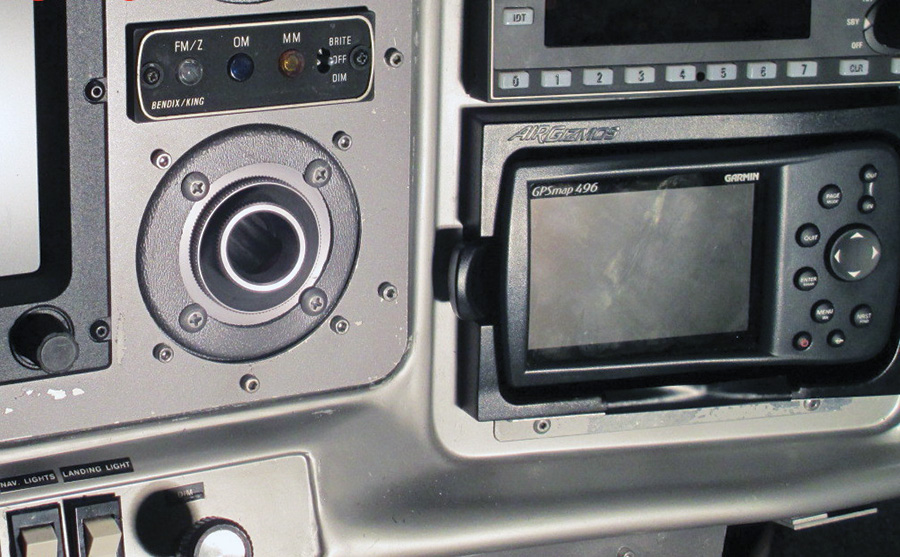
The system includes three cabin heat outlets. Two were installed near the floor on the pilot and passenger side, and one installed in the instrument panel.
I ordered the following parts from Aircraft Spruce and Specialty: one flange duct for 2-inch tubing, six feet of 2-inch SCAT hose, one 2-inch aluminum “Y” tube (non expanded), one foot of 2-inch diameter aluminum tubing, and one ACS air vent. Total cost was $162.48.

The new heat muff. Two 3-inch wooden plugs were used during fabrication to keep the sheet metal the exact radius it would be on the airplane.
My Glasair came with an engine heat muff, but the inlet and out ducts were 1.5 inches in diameter. I fabricated a new heat muff and increased the duct openings to 2 inches. This did two things: It increased the airflow through the heat muff, and it kept the exhaust pipes a bit cooler, reducing the chance of cracking. I kept the cabin heat muff the same size (15 inches long, 3-inch diameter). The aluminum sheet metal (.032 inch) was taken to a local sheet metal shop for shaping. Two wooden plugs were made (3-inch diameter), so the sheet metal was the exact radius it would be on the airplane. With that done, it was easy to shape the 2-inch aluminum ducts that would later be welded to the cabin heat muff.
The plan was to have three cabin heat outlets, with one installed in the instrument panel. Next was to have the outlets positioned to blow on the occupants. PVC tubing was used for most of the runs aft of the firewall. I used PVC because the cost is far less than $7.00-per-foot SCAT hose, and I wanted something rigid. PVC can handle 140° F and will start to deform at 160° F. Most hardware stores will have a wide assortment of PVC fittings and tubing. To increase the outlet pressure of the cabin heat (pilot and passenger side), PVC reducers were installed that decreased the outlet from 2 inches to 1 inch.
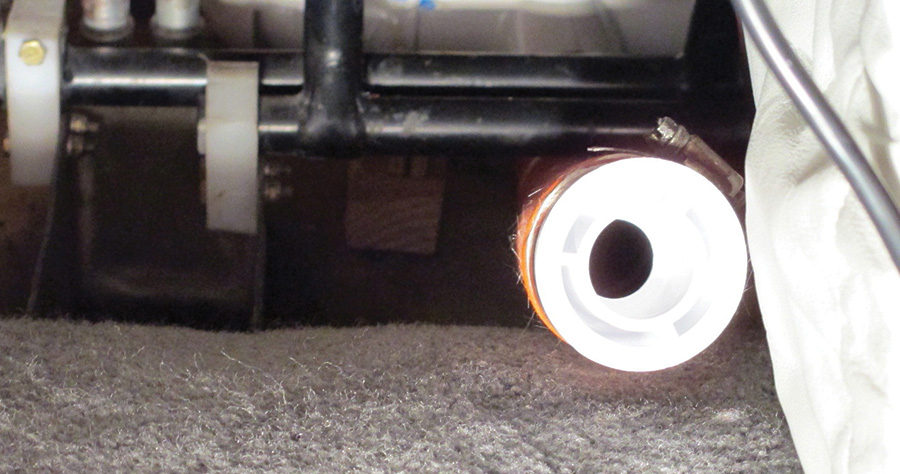
To increase the outlet pressure of cabin heat, PVC reducers were installed that decreased the outlet from 2 inches to 1 inch.
Not shown in the cabin heat plenum photo is a 90° elbow that attached to the 2-inch flange duct. This was required to keep the plenum away from rudder pedal movement and brake lines.
So, how did it work? If there is such a thing as 100% improvement, that’s where the cabin heat plenum with its three heat outlets falls. On a recent IFR flight at 11,000 feet, the OAT was 10° F. We were comfortable with just a long sleeve shirt and jeans.


